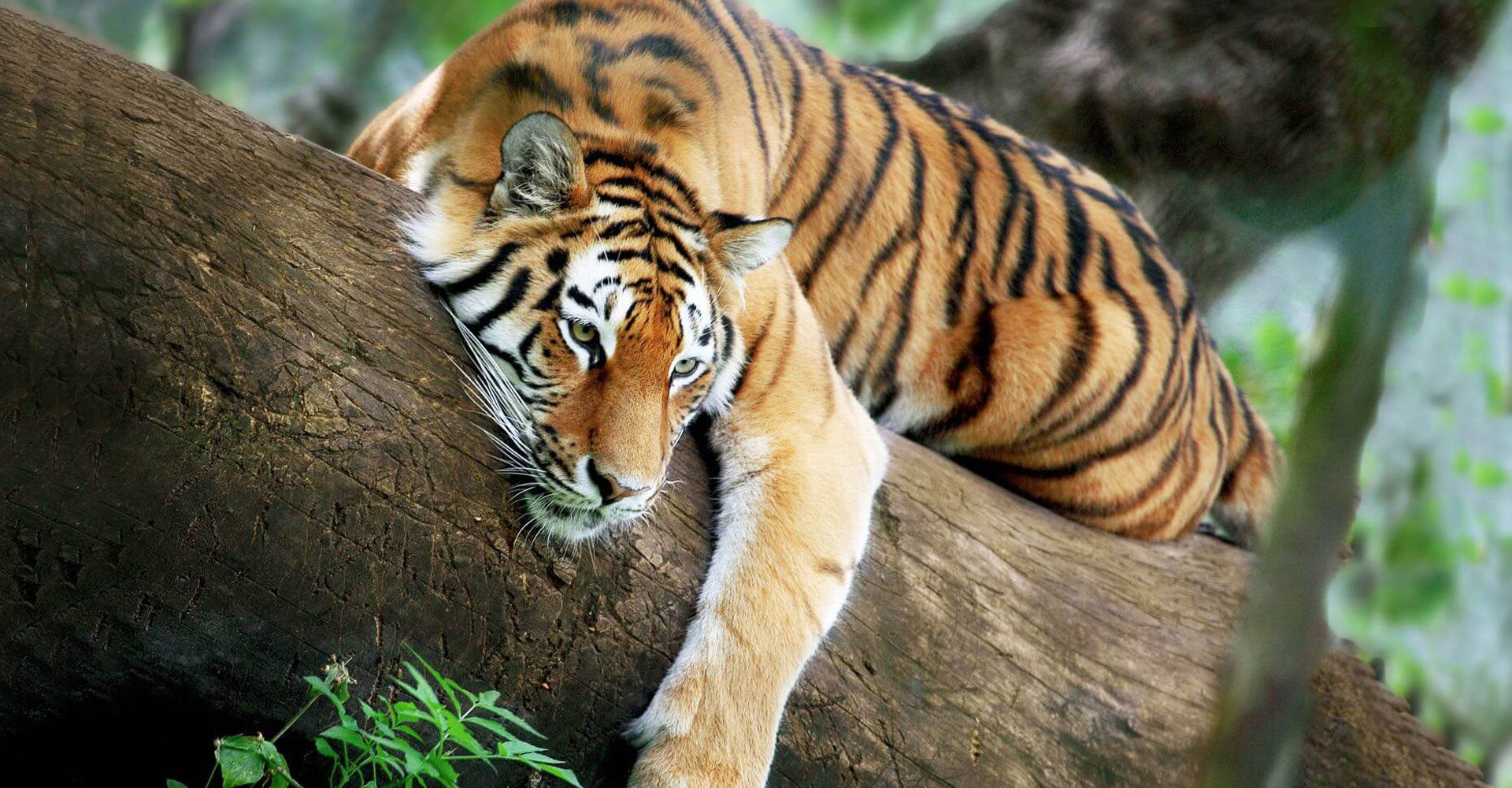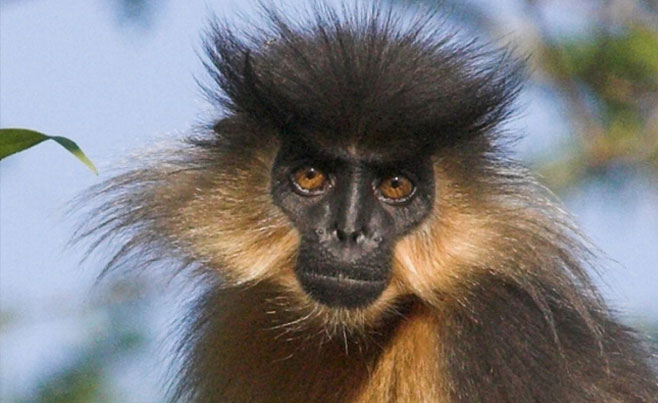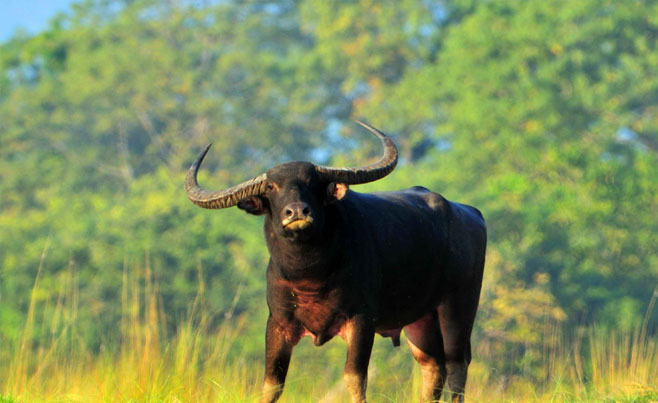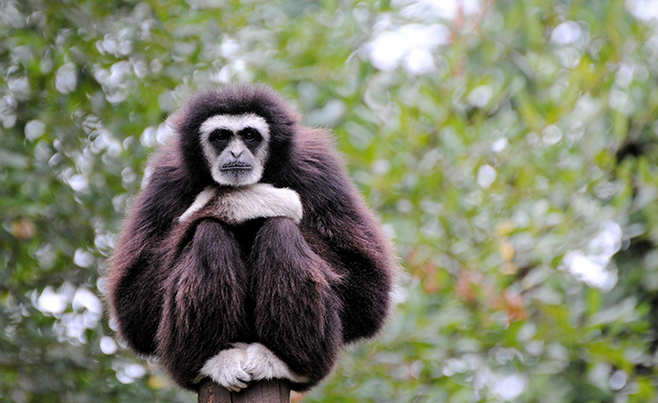Manas National Park
Best Time To Visit
Jan
Feb
Mar
Apr
May
Jun
Jul
Aug
Sep
Oct
Nov
Dec
Most Popular
High Sighting
Park Closed
Low Sighting
About Manas National Park
Species
Tiger, capped langur, wild buffalo, hoolock gibbon, golden langur, elephant, pygmy hog
Overview
Against the backdrop of the Eastern Himalayas lies a grass and jungle habitat of unparalleled beauty. Tigers, elephants, golden langurs and Bengal Floricans share this exquisite wilderness with other rare and endangered species. And, as it flows down from the Eastern Himalayas to the plains below, the silvery waters of the Manas river nurture this paradise and the myriad creatures that reside within. Smooth-pebbled and sandy-shingled, the Manas river is the life blood of the forest and the great Himalaya, blue and misty in the distance, a wall of protection. The Manas forest extends on both sides of the river and presents one of earth's most timeless vistas. As you watch the magic unfold from the safe confines of the handsome forest rest house at Mothanguri, a herd of elephants may silently make an appearance on the distant opposite bank, lending a touch of the ethereal to an earthly paradise. Little wonder then, that Manas was chosen by UNESCO to be a World Heritage site. But Manas has had a troubled past. And its future is still far from secure. The idyllic splendour of the tiger reserve, which represents the entire biotope, was shattered for nearly a decade by what came to be known as the Bodo struggle. The thick forests were used as a hiding place by armed militants who took a vicious toll on wildlife and the rhino population, for instance, was brutally decimated and traded in for cash. Those who misused the forest for terrorist activities took human lives too, targetting forest guards in particular. Manas was closed to visitors for years, but was reopened in October 1995. Though a tentative peace prevails, the park itself has never quite recovered from the aftermath of the insurgency. Poachers and timber smugglers continue to wreak havoc. Home to the wild buffalo, elephant, tiger and rhino, Manas harbours the maximum number of endangered species from India as listed in the IUCN Red Book. Lying in the foothills of the outer Himalaya, the low-lying and flat Manas habitat is a linear belt that extends between the Sankosh river to the West and the Dhansiri river in the east. The Manas river flows through the western portion of the sanctuary, splitting into the Boki and Hakua in the centre of the reserve. It later joins the mighty Brahmaputra 64 km. further south. An area of startling diversity, the gently sloping alluvial plains are watered by countless rivulets, streams and nullahs that carry large amounts of silt, pebbles and even huge boulders downstream at the height of the monsoons! This ageless process has led to formation of alluvial terraces, comprising deep layers of deposited rock and detritus overlaid with sand and soil of varying depth, shifting river channels and swamps. The terrain is characterised by rocky, porous soils like sandstone, limestone and shale in the bhabar tract towards the north. The coarse detritus is covered with sandy loam and a fine layer of humus. Rich alluvial soils from the Himalayan wash are found in the Terai belt towards the south, where the water table lies very close to the surface. The Boki basin is quickly inundated in the rains, but never for long as the slopes encourage effective drainage. In the lower reaches, beels or seasonal wetlands are formed just within the boundary of the reserve before the river joins the flood plains. In parts, sandy stretches allow clusters of trees to grow isolated from each other by water. Away from this 'pockmarked' terrain, towards the hills, great mixed deciduous forests carpeted with grasses sprawl upwards to the mountains. Wild buffalo and elephants dominate the landscape. Rhinos used to be common, but have been all but wiped out. Spectacular scenery, with a variety of habitat types and diverse fauna, makes Manas the richest of all Indian wildlife areas. The sanctuary is part of an extensive migratory wildlife route along West Bengal to Arunachal Pradesh and the borders of Bhutan. The Asiatic Buffalo is one of the highlights of Manas and the animal attains its maximum size here as compared to any other place in Asia for there is no dilution with feral stock. The wide sandy banks of the Manas and Boki rivers rich in grasses and herbs are favourite gathering places for the bovines though they bolt at the slightest hint of sound or movement. Herds may be seen at the river. Occasionally, you may witness a lone bull preparing to fight. The characteristic toss of the huge head with its impressive horns is a warning sign of impending aggression. Larger than most other elephants on the subcontinent, huge tuskers stroll in large herds across the Manas river that divides Bhutan and India. Since they travel long distances and are widely spread over migration routes they are seen often foraging on vegetation or bathing in river waters. The tiger and the leopard are the predominant cats in the area but are elusive to the casual visitor. The clouded leopard is another cat that you may be lucky to spot. Primates include the capped langur and the golden langur on the Bhutan side of Manas. Both are shy and tend to stay high up in trees safe from danger. The golden langurs (these pale chestnut coloured simians sport lighter coats in summer) are a stunning sight on the elegant flowering trees that they inhabit and the only place on the Indian side where they have been reported is in the Chakrasheela forests of Assam. It is possible however to cross the river at its narrowest and row across to the forests of Bhutan to sight them. The slow loris and the Hoolock gibbon also exist here but are rarely seen. Assamese macaques, though rare, exist in the islands downstream where they may be seen in large troupes. If you look out for it, you might spot a pair of attractive Malay tupaia or tree shrew, grey-brown animals with pointed noses and bushy tails. The pygmy hog and the hispid hare (Assamese rabbit) are tiny grassland mammals that still survive in Manas. Their future depends on the future of the sanctuary especially on the reduced burning of grassland. They are not often sighted. Manas is home to as many as 22 of the 41 Indian species that are classified as 'highly endangered' i.e. under Schedule I in the IUCN Red Book. The hog deer or pada, barking deer or muntjac, chital and sambar abound. A peculiarity with the sambar and most large deer in this region is the development of a reddish sore-like patch on their throats. The swamp deer is found in occasional pockets. Sloth bears tend to stay in thick-forested areas, but can be seen at dawn and dusk. Wild pigs are easily seen around rivers and watercourses, where they seek tubers. The river is a great place to spend your day and you may chance upon a pack of otters or water monitors here.
Trails and Excursions
Wildlife sighting at Manas is neither regular nor frequent, but when it does occur, it is usually at close range. Jeep trails through the forest yield a wide variety of birds and animals. Look in the undergrowth as well as the treetops. The endangered Bengal Florican stays camouflaged along the marshes along jheels bordered by dry scrub and high grass, but can be spotted easily during the mating season when their aerial displays are prominently visible. River banks are another sighting spot for elephant and buffalo. Cross over to the Bhutan part of the reserve (with permissions, of course!) for an almost certain sighting of the golden langur. A small rowing boat is used to go across the narrow, shallow part of the river for a short trip. The summer palace of the King is located in the park and is worth a visit. Bhutanese tribals weave colourful fabric for sale. Remember to take permission from The Forest Department before venturing out. A monastery and shrine of the Vaishnavite reformer, Mahadeva, a great disciple of Lord Shankar exists in the district of Barpeta, which is where the Manas National Park is also located. The associated kirthanghar is renowned and attracts Vaishnavites from all over India.
How To Reach
By Air:
Guwahati airport is 176 km. away.
By Rail:
Barpeta Road (40 km.) is the closest railhead to Guwahati. From here, one can continue onto Manas by road. Barpeta Road also serves as the sanctuary headquarters.
By Road:
Manas is accessible from Guwahati (176 km.), Kaziranga (403 km.), Darjeeling (466 km.), Shillong (287 km.) and Siliguri (386 km.) . Vehicles can be taken up to Mothanguri. Jungle visits may be on elephant back, jeep or car. With special permission boat rides are possible. Walking on foot is not permitted, but trips across the river to Bhutan, which involve walking, do provide a great feel of the forest. Elephant rides from Mothanguri are an interesting way to get around the park. Reservations must be made in advance through the Range Forest Officer. The chowkidar at the forest rest house will help you. Another exciting prospect is to hire a boat at Mothanguri and spend a blissful day floating downstream watching wildlife near the water.
Tips:
Ensure that you make time for a trip across the river to Bhutan for which you need permission from the authorities. Permits to visit can be obtained from the Field Director's Office in Barpeta Road. The drive from Barpeta Road to Manas is scenic with the Bansbari tea plantations and the picturesque semul bordering the roads. The gravel path crawls past the beautiful grassy expanse that affords animal sightings even on the way to the reserve. Watch out for stinging red ants that may drop from their leaf nests whilst on elephant back! While on elephant back, look out for spiders that spin webs across treetops, bird nests and other small fauna. Stunning orchids are on display from March to May. Drive slowly at a maximum speed of 30 km. per hour within the reserve. Do not honk, overtake or leave the prescribed route. Visitors are not permitted to disembark from the vehicle at any point. There are no catering arrangements in the forest lodges, so visitors are required to bring their own provisions. Utensils, crockery and the services of a cook may be available on request and a small payment. Tips are appreciated.




